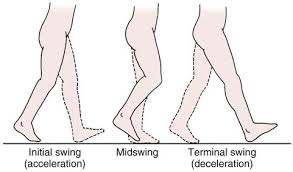
From Primal to Bipedal | Why we need to get off the ground and walk more!
Before you start throwing stones at me assuming that I’m bashing or discrediting any of the primal movement programs out there – please hear me out. Anything I’m about to say does not mean I do not value the role primal movements and ground work has on restoring optimal movement patterns. However, where these programs fall short is that ultimately we need to GET UP and being able to navigate the world of ground and gravity. We need to be able to optimize the coordination required to load and unload impact forces, stabilize on a single leg and get from point A to point B.
When we look at the evolution of the human neuromuscular system, fascial lines and the skeleton we can see that the primary purpose behind human movement is WALKING.
From the medial rotation of the ilium creating the lateral fascial line and allowing single leg stance to the abduction of the foot’s 1st ray creating the spiral fascial line and lateral fascial line allowing the stability for a rigid lever – everything – I repeat everything favors locomotion – and we need to train the body as such.
When was the last time you walked? I mean REALLY walked?
 I’ve been blessed with the opportunity to evaluate the gait of thousands of people from all over the world and there are a few key compensations that I see in too many people. So many people have lost the rotational element of gait. I’m talking locked up t-spines, restricted triplanar motion of the pelvis, tight ankles and even tighter subtalar joints.
I’ve been blessed with the opportunity to evaluate the gait of thousands of people from all over the world and there are a few key compensations that I see in too many people. So many people have lost the rotational element of gait. I’m talking locked up t-spines, restricted triplanar motion of the pelvis, tight ankles and even tighter subtalar joints.
Rotational loading and unloading of the fascial system is how we transfer impact forces and the potential energy of gait. If we lose this rotational element of gait the entire movement efficiency pattern breaks down and restrictions, compensations and connective tissue fatigue results.
So what’s causing this restriction in rotation?
Sitting, a sedentary lifestyle, driving, injury, compensation – there’s a lot of things that cause a restriction in rotation. However there is a KEY one that is missed so often and cannot be addressed through rolling, crawling and being on the ground.
This driver of restricted rotation is so important that it is what leads me to say GET OFF OF THE GROUND AND JUST WALK! What is it? Short strides!
The impact of shortened stride length!
Think of the type of walking you, your clients, your family does in a typical day. You walk around your home. You walk around the office. You walk around the store. This type of walking is not the walking EVOLUTION intended.
These small stacotic steps are insufficient to optimally 1) hydrate your fascia 2) load rotational forces in the body 3) stimulate the neuromuscular system.
To maintain an optimal gait you need to STIMULATE your gait. You need to tap into all the fascial systems with each step you take – a process that can only be achieved and a long enough stride length.
The Optimal Stride for Fascial Fitness

To better understand this let’s take a look at the point in gait in which the optimal stride is happening.
One foot is initiated heel contact with the ankle dorsiflexed, hip flexed, pelvis medially rotated and posteriorly tilted. With the foot, leg and pelvis in this position the posterior fascial line is tightened, locking the SI joint and preparing for ground contact.
Meanwhile the opposite leg is in 1st MPJ dorsiflexion ankle plantarflexion, hip extension, pelvis lateral rotation and anteriorly tilted. With the foot, leg and pelvis in this position the psoas, plantar fascia and functional fascial lines are primed to release elastic energy upon swing phase.
Now the SHORTER the stride you take you tighten your rotations of the t-spine, pelvis and foot eventually leading to fascial tightness and compensations.
Since walking is THE most functional movement we do every day with the average adult taking 5,000 – 8,000 steps per day – improper stride length is what’s f’ing up your body.
These small steps we take to our cars, around the office or at home are killing our fascial system. It is a cycle that can only be temporarily alleviated by rolling and crawling on the ground.
Imagine this. You take your client through all the rolling patterns, dynamic bodyweight movements, foam rolling – all which are so great for the body – and then they leave the session and go back to waking small steps and in insufficient stride length. They just REVERSED all the work you did.
The solution?
Walk. And I mean really walk. Put on your favorite shoes, grab your earbuds and walk. Do not go on the treadmill, I need you to walk outside. Find the pace that feeds into a momentous state. You will feel when your body has switched and is now flowing in your fascial. It is an effortless gait that is working WITH the ground and impact forces, not against it.
And then just walk.
Want to learn more about human locomotion, the evolution of gait and how to optimize rotations through walking. Become a Barefoot Training Specialist with EBFA! We are the Leaders in Barefoot Education and #fromthegroundup programming.
www.ebfafitness.com
Say #barefootstrong
Dr Emily Splichal
